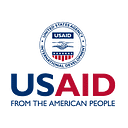CATALYZE EduFinance TIEEZ Trainings Making a Mark: Transforming School Leadership at St Joseph’s Primary School in Zambia
In the quest for quality education worldwide, school leaders play a pivotal role in steering their schools toward excellence as underscored by Sustainable Development Goal (SDG4) of the UNESCO 2030 agenda, which seeks to ensure quality education for all and promote lifelong learning.
Recognizing this, CATALYZE EduFinance Zambia Activity is supporting the Targeted Intervention for Excellence in Education in Zambia (TIEEZ) program, in collaboration with Promoting Equality in African Schools (PEAS), which works closely with government-run schools across Zambia to deliver high-quality secondary education to marginalized students in remote and underserved areas.
Currently, CATALYZE EduFinance is training 60 school leaders in Zambia through the TIEEZ approach to drive school improvements through professional development and capacity-building. CATALYZE EduFinance recently spoke to four school leaders at St Joseph’s Primary School in Zambia about the impact they have noticed in their classrooms.
Steven Mukanu, Head Teacher
Steven has embraced the training to conduct effective lesson observations, using the tools provided by PEAS. His training has enabled him to offer structured feedback to the teachers he observes, and supported the creation of a School Improvement Plan to drive progress and development.
Steven has seen positive changes in teaching methodology within St Joseph’s — from a teacher-centered to a learner-centered approach, resulting in increased student participation. Other positive outcomes include reduced learner absenteeism, increased community engagement, and improved record management. Steven emphasized the new sense of responsibility among school leaders, particularly around the importance of child protection how to report cases or concerns as well as the time and effort spent on lesson planning thanks to the TIEEZ training. “There is now accountability in terms of lesson plans — each and every teacher prepares for their lessons every day,” he says.
Sister Brenda Chileshe — Deputy Head Teacher
Brenda benefitted from learning about child protection, lesson planning, and the Top Ten Teaching Practices, an evidence-based approach developed by PEAS based on best practice observed in the classrooms. She said she was grateful for what she learned about school improvement plan development, the gradual release model of teaching, and means of verification approach.
As Deputy Head Teacher, Brenda leverages the learnings from the EduFinance Zambia program to monitor teachers’ lesson planning and preparation, as well as emphasize the gradual release model, a best practice instructional model where teachers strategically transfer the responsibility in the learning process from the teacher to the students. She applies these learnings by keeping clear records of any progress as means of verification. Brenda has used the Child Protection Road Map to sensitize learners and teachers on how to report child protection related cases. Brenda noted that her learning application has resulted in greater lesson planning consistency among teachers, which has reduced learner absenteeism and improved learner performance and engagement.
Gwen Malaika, School INSET Coordinator
Gwen has become a passionate advocate for the “I Do, We Do and You Do” teaching strategy in her classroom, thanks to her training from PEAS’ TIEEZ. As a School INSET Coordinator, Gwen imparts this valuable knowledge to her fellow teachers, promoting active participation of all all learners in answering questions.
From the training, Gwen has observed greater consistency in lesson planning and significant improvements in learner participation in her classroom, which is fostering inclusivity for learners with special needs .
Mwimba Kasonde: School INSET Coordinator
Mwimba has gained valuable insights into lesson planning, effective questioning techniques and promoting inclusive learning environments, and the value of teamwork and noted EduFinance Zambia’s support.
Mwimba highlighted the positive shift from punitive measures to positive behavior management strategies, resulting in a safer and more nurturing learning environment thanks to the training on child protection in the TIEEZ program.
Mwimba has incorporated PEAS’ Top Ten Practices into her teaching, and as a result, has seen improved student participation and enhanced learner performance.
About CATALYZE EduFinance
CATALYZE EduFinance (September 2019–2027) uses a blended finance approach to test models that improve and sustain learning outcomes for children and youth globally, particularly those most vulnerable. CATALYZE pilots multiple models in 14 countries across Latin America and the Caribbean and Sub-Saharan Africa, supporting local education stakeholders in state and non-state education in early childhood development and early childhood care and education; primary and secondary education; technical and vocational education and workforce development; and improving enabling environments. Pilot activities implemented by EduFinance are complemented by a global community of practice, the Education Finance Network.
CATALYZE EduFinance has partnered with PEAS in Zambia to increase the provision and demand for quality education in Zambia, with a particular focus on locally-owned, non-state primary schools. Through the TIEEZ model, PEAS is working to improve education equality in 108 schools through professional development for teachers and school leaders, and creating school development plans through their Pathways to Excellence program.
To date, CATALYZE EduFinance has mobilized more than $3.7 million in private capital to support low-fee, non-state schools across South Africa, Zambia, Tanzania, and the Democratic Republic of the Congo (DRC). Read more stories from EduFinance here.
This blog was made possible through support provided by the Bureau for Development, Democracy, and Innovation, Private Sector Engagement (PSE) Hub and Center for Education, U.S. Agency for International Development. The opinions expressed herein are those of the author(s) and do not necessarily reflect the views of the U.S. Agency for International Development.
